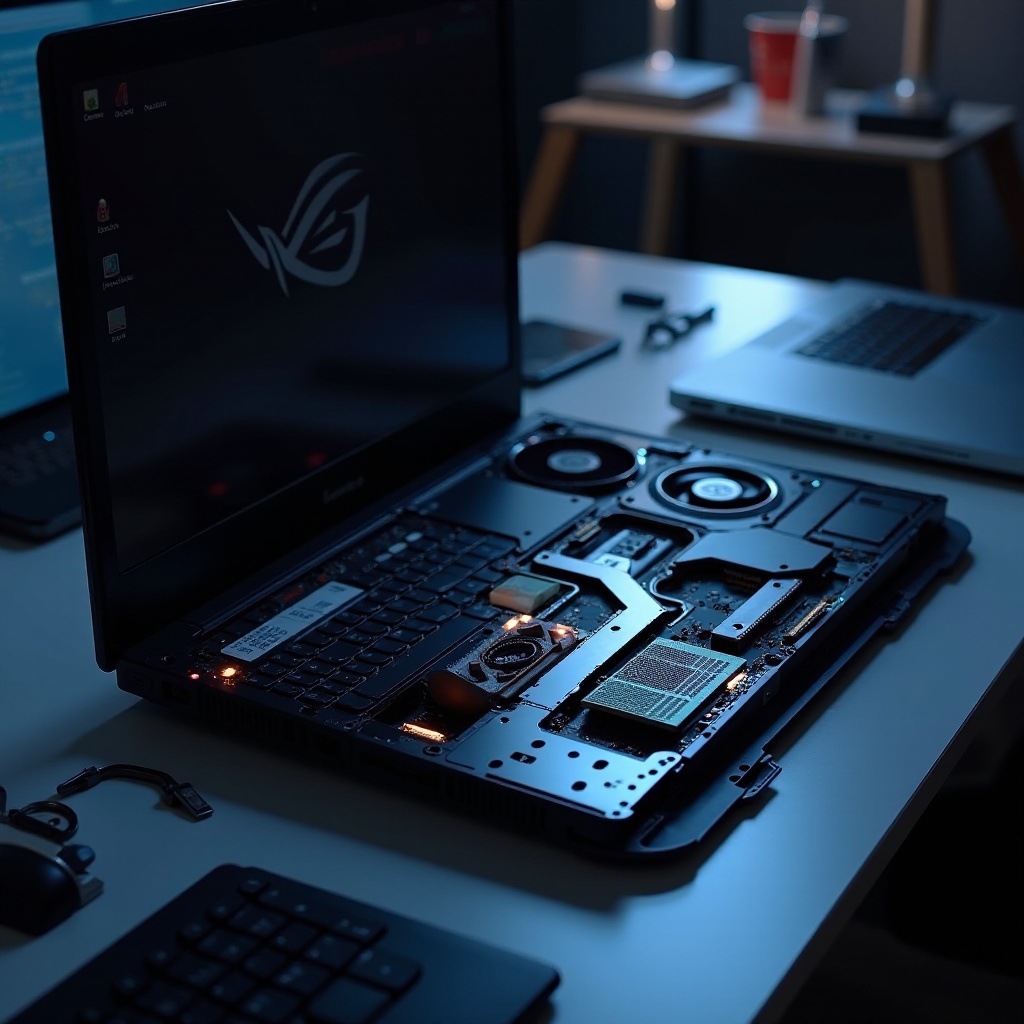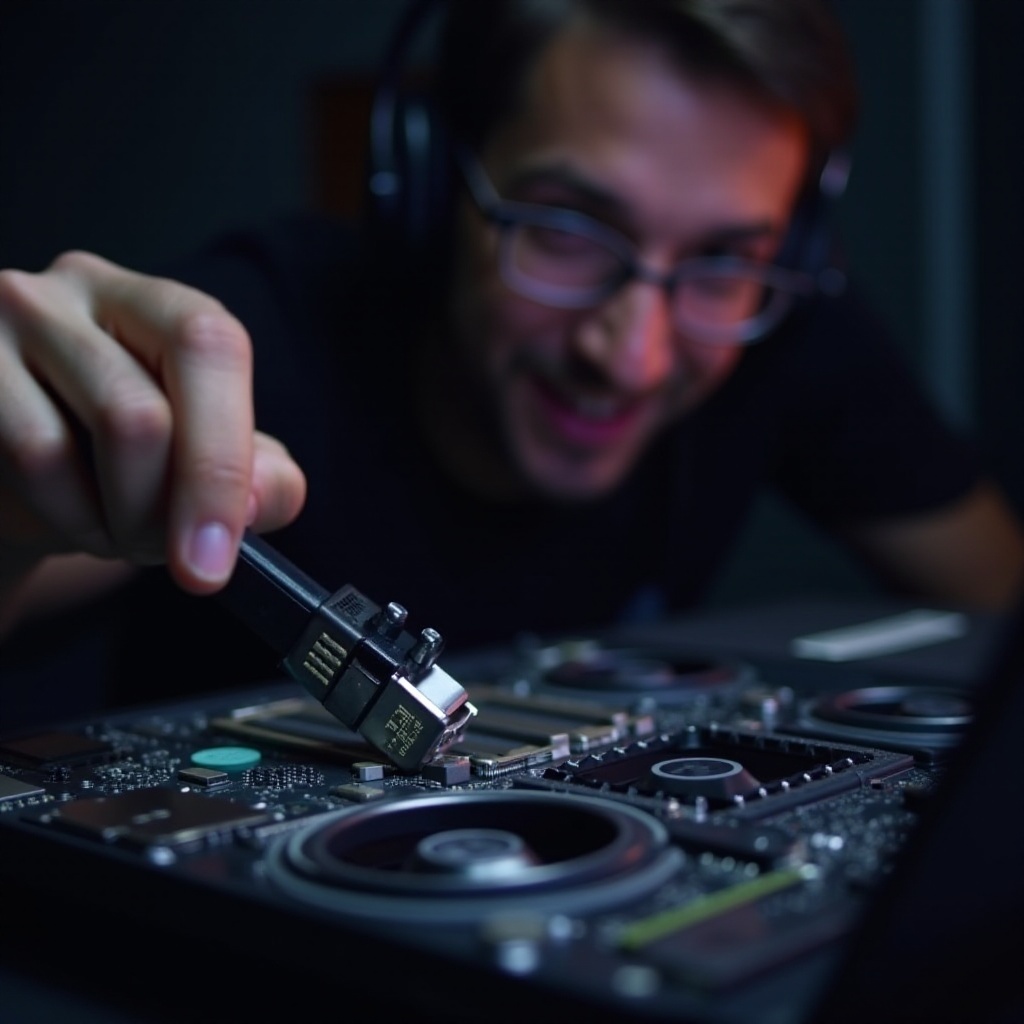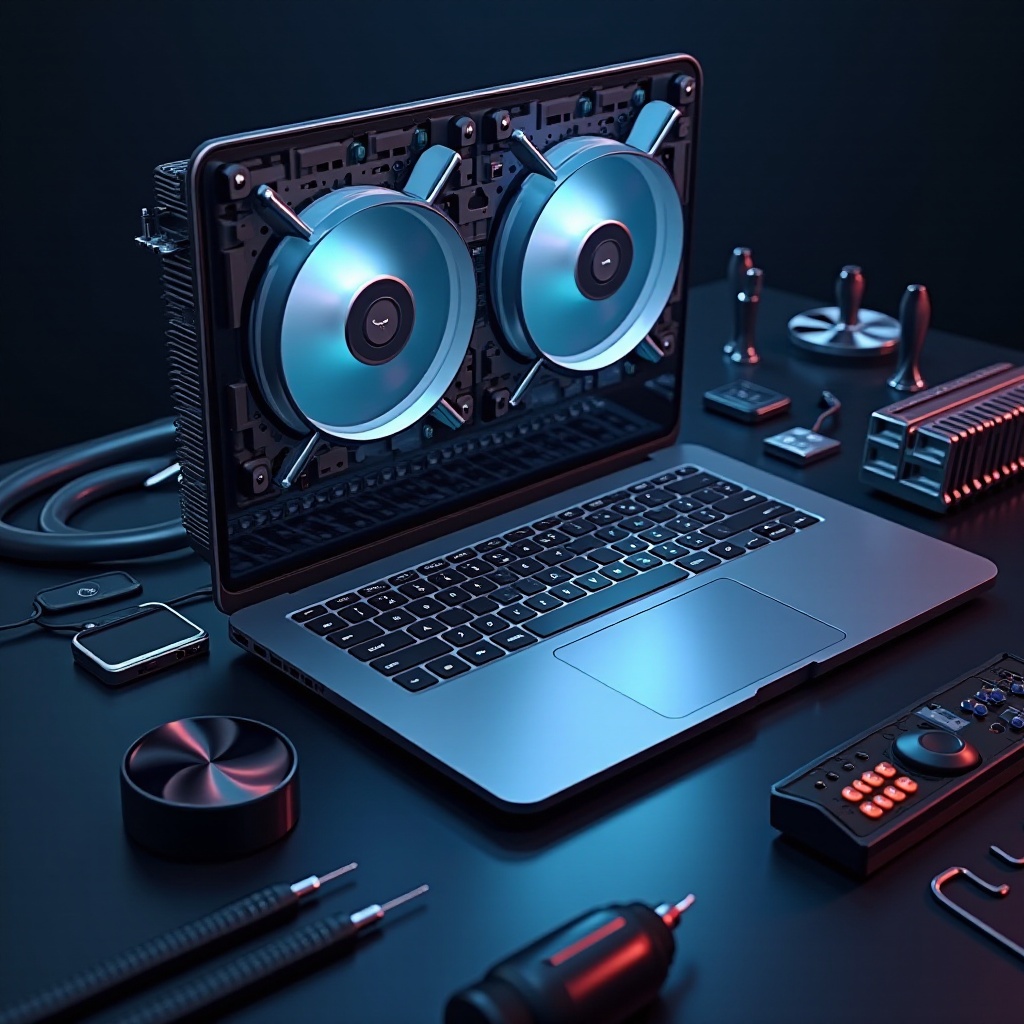
Introduction
As the gaming landscape evolves, so do the hardware demands. Gamers often find their laptops struggling to handle the latest games efficiently. While buying a new laptop is an option, upgrading your current gaming laptop can be a cost-effective way to enhance performance. Key upgrades such as increasing RAM, expanding storage, boosting graphics, and improving cooling systems are among the top enhancements. These changes can significantly extend the lifespan of your gaming setup and handle future gaming needs. This article examines the vital steps involved in successfully upgrading your gaming laptop.

Evaluating Your Gaming Laptop’s Upgrade Potential
Before embarking on your upgrade journey, it’s necessary to evaluate your gaming laptop’s upgrade potential. Not all gaming laptops are built with expandability in mind due to their compact designs. Manufacturers might restrict upgrades to maintain their slim profiles. Start by inspecting the user manual or manufacturer’s website to identify parts like RAM and storage that can be upgraded. Compatibility is crucial, so make sure the new components align with your current hardware setup. This thorough evaluation ensures a smoother upgrade process leading to improved performance.

Upgrading the Memory (RAM)
Upgrading the RAM in your gaming laptop is a straightforward process that can significantly enhance its ability to cope with demanding games and multitasking effectively.
Identifying Compatible RAM
The first step in upgrading your RAM is identifying what type your laptop supports—whether it’s DDR3, DDR4, or DDR5. Additionally, verify the maximum RAM capacity your laptop can handle using system analysis tools or manufacturer guidelines to confirm the compatible configuration.
Installation Process
After securing the compatible RAM, follow these steps for installation:
1. Turn off your laptop and disconnect any cables.
2. Carefully remove the back panel using guidance from your laptop’s manual.
3. Locate and release the clips securing the current RAM, then remove the old RAM sticks.
4. Firmly insert the new RAM sticks until they click into place.
5. Reassemble the back panel and turn on your laptop to ensure it recognizes the new RAM.
Enhancing Storage Capabilities
An inadequately performing hard drive can significantly hinder your laptop’s efficiency. Upgrading storage facilities can resolve speed issues and add space for games and media files.
Choosing Between SSD and HDD
When considering upgrades, SSDs are the preferred choice over HDDs due to their speed and reliability. While SSDs boost performance, HDDs offer more storage at a lower cost. Your choice depends on your speed requirements and storage needs.
Steps to Upgrade Your Storage
- Backup all essential data to ensure no loss occurs.
- Following the manual instructions, remove the old storage device.
- Install your new SSD or HDD in the corresponding slot.
- Reinstall your operating system and restore data from backup files.
Boosting Graphics Output
To truly experience high-quality gaming visuals, additional focus on graphics upgrading is essential—offering a leap in visual performance when paired with other hardware components.
Internal vs. External GPU Options
Internal GPU upgrades are often limited, however, some laptops can support them. Alternatively, external GPU enclosures enhance graphics without internal modifications. This setup leverages desktop-class GPUs through Thunderbolt interfaces for superior performance.
Settings Adjustments for Optimal Graphics
Regularly adjust in-game settings and update graphics drivers for optimal performance:
1. Adjust in-game settings like resolution, shadows, and textures for better graphics performance.
2. Utilize NVIDIA or AMD software tools to fine-tune settings tailored to your game’s requirements.
3. Routinely check and install driver updates for the latest enhancements.
Improving Cooling Systems
With enhanced hardware comes increased heat output. Improved cooling systems are vital to maintaining your laptop’s performance after other upgrades.
Signs Your Laptop Needs Better Cooling
Frequent overheating, noticeable performance throttling, and excessive fan noise can indicate inadequate cooling. Addressing these issues promptly ensures your laptop’s longevity.
Effective Cooling Solutions
- Use a cooling pad to aid heat dissipation.
- Regularly clean fans and heat sinks to remove dust and debris.
- Reapply thermal paste to enhance heat transfer efficiency.
- Keep airflow unobstructed by ensuring vents remain clear of obstructions.

Software Optimization Techniques
Hardware upgrades paired with optimized software can elevate your gaming experience further.
Keeping Drivers Updated
Consistently updating drivers ensures your laptop’s hardware functions optimally. Obtain updates from manufacturers’ websites or trusted software.
Managing System Resources
Close unnecessary background programs to free resources. Utilize task managers or monitoring tools to oversee and control RAM and CPU usage effectively.
Conclusion
Upgrading your gaming laptop can revolutionize your gaming adventures without investing in a new machine. Start by evaluating your laptop’s potential, prioritize essential hardware improvements, enhance graphics, maintain cooling efficiency, and fine-tune software settings for remarkable performance results. Each upgrade promises a smoother, more captivating gaming experience, bringing you closer to the forefront of high-performance gaming.
Frequently Asked Questions
Can I upgrade the CPU in my gaming laptop?
Upgrading a laptop CPU is complex and generally not recommended, as most are soldered onto the motherboard. Consult with a professional for advice.
Is it worth upgrading an old gaming laptop?
Upgrading an older laptop is worthwhile if the part costs and labor are below the expense of purchasing a new one. Compare performance impacts versus costs.
How often should I upgrade components on my gaming laptop?
No fixed schedule exists; upgrade based on your gaming requirements and game demands. Regular assessments aid in determining upgrade timing.
